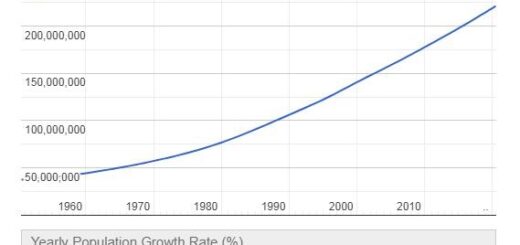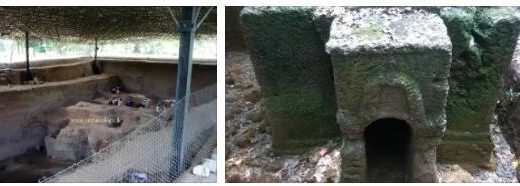Japan Transportation
Bicycle
In large cities and in tourist areas there are a large number of providers who rent out bicycles and scooters.
Coach
Express buses from the bus company JR Bus Kanto connect the major cities with each other.
Regulations
Traffic regulations: – alcohol limit: 0.0 ‰; note: in Japan, passengers can also be fined if they do not prevent drunk people from driving; – left-hand traffic; – Children under the age of 6 must be transported in child seats; – Telephoning at the wheel is only permitted with a hands-free device. Speed limits: – in built-up areas and on country roads: 60 km/h; – Motorways: 100 km/h; Minimum speed: 50 km/h.
- Educationvv.com: Provides school and education information in Japan covering middle school, high school and college education.
Roadside Assistance
The ADAC foreign emergency call offers ADAC members and holders of ADAC foreign health and accident insurance comprehensive assistance in the event of vehicle breakdowns, traffic accidents, loss of documents and money, and medical emergencies. The emergency number is available around the clock; for vehicle damage: Tel. +49 (89) 22 22 22, for illnesses: +49 (89) 76 76 76. The Japanese ADAC partner club is the Japan Automobile Federation (JAF) in Tokyo, Tel. +81 (3) 34 36 28 11, +81 (3) 35 78 49 10.
Documentation
Austrian citizens can drive in Japan with the Austrian international driver’s license, German and Swiss citizens need a translation into Japanese in addition to their national driver’s license. The Japan Automobile Federation (JAF) prepares translations on the same day or at the latest on the next working day at its numerous service counters. Further information can be obtained from the Japanese Tourist Office JNTO in Frankfurt/M., Tel. +49 (69) 20353. The Japanese Tourist Office JNTO in Frankfurt can also help with obtaining a driver’s license translation from Europe. Driver’s license translations from ADAC Südbayern eV are also accepted.
Note on travel by road
There are only a few traffic signs with Latin letters. A compass and road maps in Latin and Japanese script are therefore very helpful in rural areas. The city centers are often congested.
Traveling in the city
Public transport is excellent and punctual, but crowded at peak times (especially in the mornings between 08:00 and 09:00). All major cities (Tokyo, Osaka, Kyoto, Nagoya, Yokohama and Sapporo) have a subway system. For easier orientation, the different lines are marked with letters instead of Japanese names and the stations are marked with numbers. The various lines in Tokyo are mainly operated by Tokyo Metro Co. Ltd. and operated by Toei. Various S-Bahn lines are either publicly or privately operated. You can easily transfer between trains of most companies and continue with the same ticket. The JR Yamanote Railway in Tokyo and the JR Kanjo Railway in Osaka are circular railways around the centers of the two cities. The Yamanote Subway Line stops at important stations such as Shibuya, Shinjuku or Tokyo Station. Fares are based on distance. The tickets must be handed in at the exit of the destination station. Weekly and monthly passes are also available. In Tokyo and Osaka, inexpensive day tickets are also available for the inner-city public transport. Bus: When using city buses, you should ask the hotel staff for precise directions. When you get on the bus you take a card with the number of the station and pay when you get off. The suburban trains, operated by private companies, supplement the local transport system.
Locally on the way by train
Japan has one of the best rail networks in the world. On the main routes of the JR Group (Japan Railways Group), the trains run at very short intervals. Shinkansen are very fast express trains. They run between Tokyo and the main parts of the country several times an hour. With top speeds of up to 300 km/h, they are an alternative to air travel. There are hardly any delays. A special surcharge applies to express trains and first-class carriages. Seat reservations are required for first class carriages and early booking is recommended. There are also express trains, express trains and local trains. The fares consist of a basic tariff, which depends on the length of the journey, and a surcharge, which varies depending on the type of trains used. In the train stations of the larger cities, reservation tickets for shikansen and express trains, couchette car tickets and other reservation-requiring special tickets are sold at ticket counters marked in green. The Hokkaido Shinkansen connects Aomori to Hokkaido via the Seikan Tunnel. The tourist train Twilight Express Mizukaze offers excursions in western Japan’s Keihanshin, Sanin and Sanyo regions. The luxury tourist train Train Suite Shiki-Shima offers 2-day and 4-day tours in the north-eastern regions of Japan from spring to autumn, and 3-day tours in winter.
Rail passes
Japan Rail Pass: A voucher for this pass can be purchased from various travel companies in Germany, Austria and Switzerland before departure. In Japan, this is then redeemed for the actual passport. For more information, contact the Tourist Office (see Addresses) or visit Japan Rail Pass online. The Japan Rail Pass is valid for 7, 14 or 21 consecutive days. Children between 6-11 years pay half. The pass entitles you to unlimited travel on train, bus and boat lines operated by Japan Rail. However, the pass cannot be used on the Nozomi and Mizuho trains on the Shinkansen routes to Tokaido, Sanyo and Kyushu. Other providers charge a surcharge. For travelers staying only in certain regions of Japan, regional rail passes available at great rates include: – the JR-East Pass for regions north of Tokyo, excluding Hokkaido; – the JR-West Rail Pass for the regions west of Kansai International Airport; and – the JR-Kyushu Rail Pass for the entire island of Kyushu. The Suica Card is a prepaid card that can be used on JR East trains, subways and buses, and in conjunction with the N’EX ticket on the Narita Express, which connects major stations in the Tokyo metropolitan area to Narita Airport.
Traveling by ship
There are regular ferry, speedboat and hovercraft services from the main island to the smaller Japanese islands. Main routes are: Awaji: Akashi – Iwaya; Shodo-shima: Shin-Okayama-Tonosho. There are ferry connections from Tokyo, Osaka and Kobe to the ports of Hokkaido and Kyushu. In the seaside resorts and inland lakes there are tour boats, hydrofoil boats and hovercraft boats. Bullet trains run regularly between Tokyo and major ports.



